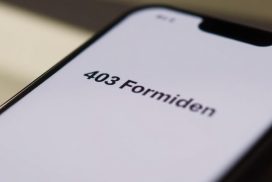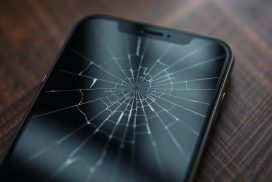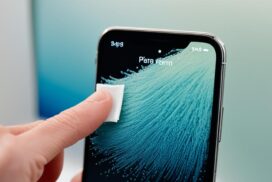Addressing Screen Flickering on iPhone 11 Pro Max
If you’re experiencing screen flickering on your iPhone 11 Pro Max, it can be caused by either a software or hardware issue. Common software-related causes include a buggy iOS update, outdated apps, or improper configurations. A screen glitch can also be a factor. If it’s a software issue, you can try fixing it yourself using the following solutions. However, if the problem persists, it may be a hardware issue that requires a visit to an Apple Store.
To address screen flickering on your iPhone 11 Pro Max, it’s important to differentiate between software and hardware issues. By understanding the possible causes, you can implement the appropriate solutions and restore your device to its optimal performance.
Force Restart the iPhone
One of the first steps to address screen flickering on your iPhone is to perform a force restart. This can often resolve software-related issues, including screen flickering. The process varies depending on the iPhone model. For newer models (iPhone 8 and newer), you can quickly press and release the Volume Up button, then the Volume Down button, and finally, hold the Side button until the Apple logo appears. For iPhone 7 and 7 Plus, hold both the Sleep/Wake and Volume Down buttons. And for iPhone 6s and earlier models, hold both the Sleep/Wake and Home buttons.
If you’re unsure about which iPhone model you have, you can check it by going to Settings, then General, and tapping on About. The model information will be listed there.
Force Restart Steps for Different iPhone Models:
| iPhone Model | Force Restart Steps |
|---|---|
| iPhone 8 and newer | Press and release Volume Up, then Volume Down, and hold the Side button until the Apple logo appears. |
| iPhone 7 and 7 Plus | Hold both Sleep/Wake and Volume Down buttons until the Apple logo appears. |
| iPhone 6s and earlier | Hold both Sleep/Wake and Home buttons until the Apple logo appears. |
Performing a force restart on your iPhone can help resolve screen flickering issues caused by software glitches. If the problem persists after a force restart, continue with the other troubleshooting steps.
Turn off Auto-Brightness
Disabling the Auto-Brightness feature on your iPhone has proven to be effective in resolving screen flickering issues for many users. To turn off Auto-Brightness, follow these steps:
- Go to Settings
- Tap on Accessibility
- Scroll down and select Display & Text Size
- Toggle the Auto-Brightness option to OFF
By disabling Auto-Brightness, you can prevent your iPhone screen from flickering due to automatic brightness adjustments.
Use a Repair Tool
If disabling Auto-Brightness doesn’t fix the screen flickering, you can try using a third-party software repair tool. One highly recommended tool is iOS System Recovery, which can diagnose and fix software issues automatically. Download and install the software, connect your iPhone to your computer, select the iOS System Recovery tab, choose the appropriate repair mode, download the necessary firmware package, and click on the Fix button to start the repair process. Once completed, your iPhone should no longer experience screen flickering.
“A reliable software repair tool can effectively resolve screen flickering issues on your iPhone.”
Using a repair tool like iOS System Recovery can be a convenient and efficient solution for fixing screen flickering problems. This tool is specifically designed to diagnose and repair software issues that may be causing your iPhone’s screen to flicker.
Here is a step-by-step guide on how to use iOS System Recovery to fix your iPhone’s screen flickering:
- Download and install iOS System Recovery software on your computer.
- Connect your iPhone to your computer using a USB cable.
- Launch the iOS System Recovery software and select the iOS System Recovery tab.
- Choose the appropriate repair mode based on your specific issue.
- Download the necessary firmware package for your iPhone.
- Click on the Fix button to start the repair process.
“Using a repair tool is a convenient and effective way to fix iPhone screen flickering.”
By following these steps, the repair tool will diagnose the software issues causing the screen flickering and automatically resolve them. Once the repair process is complete, your iPhone should no longer experience screen flickering.
| Pros | Cons |
|---|---|
| Provides an automated solution to diagnose and fix software issues. | Requires downloading and installing third-party software. |
| Can be more cost-effective than visiting an Apple Store for repairs. | May not be able to fix hardware-related screen flickering issues. |
| Allows you to address the issue at your convenience without having to leave your home. | Requires a reliable internet connection for downloading the firmware package. |
“Consider the pros and cons of using a repair tool to address screen flickering on your iPhone.”
While using a repair tool like iOS System Recovery can be an effective way to fix iPhone screen flickering, it’s important to consider the pros and cons before proceeding. This table provides an overview of the advantages and disadvantages of using a repair tool for screen flickering issues.
Keep in mind that if the screen flickering persists after using a repair tool, there may be a hardware-related issue that requires professional assistance. In such cases, it’s recommended to visit an Apple Store or contact Apple Support for further guidance.
Close or Uninstall App
If you’re experiencing screen flickering on your iPhone and it seems to be happening when you’re using a specific app, the app itself might be the problem. In such cases, you can try closing the app and see if it resolves the issue.
To close the app, you can access the app switcher by swiping up from the bottom of the screen on newer models or double-clicking the Home button on older models. Once you’re in the app switcher, find the preview of the problematic app and swipe it up to close it.
How to Close an App:
- Swipe up from the bottom of the screen on newer models or double-click the Home button on older models to access the app switcher.
- Find the preview of the app that’s causing the screen flickering.
- Swipe up on the app’s preview to close it.
If you reopen the app and the screen flickering persists, it’s recommended to uninstall and reinstall the app. Here’s how you can do it:
How to Uninstall and Reinstall an App:
- Press and hold the icon of the app until it begins to jiggle.
- Tap the ‘X’ icon on the app’s icon to uninstall it.
- Go to the App Store and reinstall the app.
By closing or uninstalling the problematic app, you may be able to fix the screen flickering issue on your iPhone.
Turn off HDR on Photos app
If you’re experiencing screen flickering while using the Photos app on your iPhone, particularly when switching through pictures, a potential solution is to turn off the HDR (High Dynamic Range) setting. Many users have reported that disabling Auto HDR resolves the flickering issue.
To disable Auto HDR on your iPhone, follow these steps:
- Open the Settings app on your iPhone.
- Tap on Camera.
- Disable the Auto HDR option.
Once you have turned off the HDR setting, try using the Photos app again and see if the screen flickering issue has been resolved.
Solve Screen Flickering by DFU Mode
If previous solutions haven’t resolved the screen flickering issue, you can try putting your iPhone into DFU mode. DFU (Device Firmware Update) mode is a deep restore mode that can make low-level changes to the device’s software and fix persistent bugs and issues. Enter DFU mode by following the specific steps for your iPhone model (outlined in the detailed note section), and then restore your device through iTunes or Finder. Keep in mind that this will erase all data on your device, so make sure to back up important information before proceeding.
DFU Mode Steps for Different iPhone Models:
iPhone 8 and newer models:
- Connect your iPhone to your computer and open iTunes (on Mac) or Finder (on Mac starting macOS Catalina and later).
- Press and release the Volume Up button quickly.
- Press and release the Volume Down button quickly.
- Hold the Side (or Power) button until the screen turns black.
- Keep holding the Side (or Power) button and then press and hold the Volume Down button simultaneously for 5 seconds.
- Release the Side (or Power) button while continuing to hold the Volume Down button for another 10 seconds.
- If the screen remains black and no logo appears, your iPhone is now in DFU mode. Follow the on-screen instructions in iTunes or Finder to restore your device.
iPhone 7 and 7 Plus:
- Connect your iPhone to your computer and open iTunes (on Mac) or Finder (on Mac starting macOS Catalina and later).
- Press and hold both the Sleep/Wake and Volume Down buttons simultaneously for 8 seconds.
- Release the Sleep/Wake button while continuing to hold the Volume Down button for another 5 seconds.
- If the screen remains black and no logo appears, your iPhone is now in DFU mode. Follow the on-screen instructions in iTunes or Finder to restore your device.
iPhone 6s and earlier models:
- Connect your iPhone to your computer and open iTunes (on Mac) or Finder (on Mac starting macOS Catalina and later).
- Press and hold both the Sleep/Wake and Home buttons simultaneously for 8 seconds.
- Release the Sleep/Wake button while continuing to hold the Home button for another 5 seconds.
- If the screen remains black and no logo appears, your iPhone is now in DFU mode. Follow the on-screen instructions in iTunes or Finder to restore your device.
Conclusion
In conclusion, screen flickering on the iPhone 11 Pro Max can stem from either software or hardware issues. If you encounter screen flickering, you can attempt various software-based solutions. Firstly, a force restart may resolve the issue, followed by disabling Auto-Brightness in the display settings. Using a reputable repair tool is another option to rectify the problem. Additionally, closing or uninstalling problematic apps, turning off HDR on the Photos app, or utilizing the DFU mode can also address the screen flickering.
If none of these solutions prove effective, it is advisable to seek support from Apple or visit an Apple Store for hardware repair. Remember to back up your data prior to undertaking any troubleshooting measures. Resolving screen flickering on your iPhone 11 Pro Max will enhance your user experience and ensure optimal functionality.
FAQ
What can cause screen flickering on my iPhone 11 Pro Max?
Screen flickering on your iPhone 11 Pro Max can be caused by either a software or hardware issue.
How can I force restart my iPhone to address screen flickering?
To force restart your iPhone, quickly press and release the Volume Up button, then the Volume Down button, and finally, hold the Side button until the Apple logo appears.
How can I turn off Auto-Brightness on my iPhone?
To turn off Auto-Brightness, go to Settings, tap on Accessibility, then Display and Text Size, and toggle the Auto-Brightness option to OFF.
Is there a software repair tool I can use to fix screen flickering on my iPhone?
Yes, one highly recommended tool is iOS System Recovery, which can diagnose and fix software issues automatically. Download and install the software, connect your iPhone to your computer, select the iOS System Recovery tab, choose the appropriate repair mode, download the necessary firmware package, and click on the Fix button to start the repair process.
What should I do if screen flickering occurs when using a specific app?
If screen flickering occurs when using a specific app, try closing the app by accessing the app switcher and swiping up on the app’s preview. If the flickering persists when you reopen the app, uninstall and reinstall the app from the App Store.
How can I turn off HDR on the Photos app to fix screen flickering?
To turn off HDR on the Photos app, go to Settings, tap on Camera, and disable Auto HDR.
How can I put my iPhone in DFU mode to solve screen flickering?
To put your iPhone in DFU mode, follow the specific steps for your iPhone model (outlined in the detailed note section), and then restore your device through iTunes or Finder. Keep in mind that this will erase all data on your device, so make sure to back up important information before proceeding.












